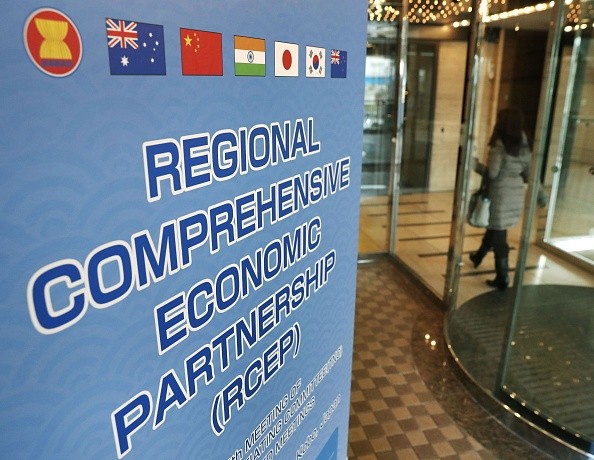The 16-nation Regional Comprehensive Economic Partnership (RCEP) has begun trade negotiations in Kobe, Japan, to form an Asian pact and finalize agreements on tariff cuts and market access in the services sector, Bloomberg reported.
China has seized the leading role in the RCEP, following the decision of U.S. President Donald Trump to withdraw from the 12-nation Trans-Pacific Partnership (TPP) and pursue a protectionist policy.
The RCEP, which is more of a traditional trade deal, is facing various challenges, including disputes on tariff cuts and issues on the services sector.
"The stumbling blocks are multiple," said Iman Pambagyo, chief of the RCEP trade negotiating committee and director-general of international negotiations with Indonesia's Trade Ministry.
According to Pambagyo, only about 700 of more than 5,000 tariff lines covered in the deal had been agreed on by RCEP negotiators.
Japan's State Minister for Foreign Affairs Kentaro Sonoura is optimistic that the partnership could lead to a deal that would push the growth of supply chain in Asia.
"This is the first meeting of the year," Sonoura said. "I have strong expectations of progress towards the early conclusion of a high-quality agreement."
An official involved in the talks, however, said that only about 30 percent of the deal may be finalized, adding that some countries want to provide varying degrees of market access to member nations.
According to Yorizumi Watanabe, a former trade negotiator with Japan's foreign ministry, now a professor at Keio University, it would depend on the RCEP, "if they would prioritize speed over quality. It's possible RCEP could take over from TPP as the model for future agreements. But if they try to rush, it might be thin."
Although China is pushing for the RCEP, some members of the TPP want to revive the pact, either by continuing without the U.S. or wait for Trump's decision.
Australia has expressed intention to pursue the TPP without the U.S. and said it will gather support during the ministerial talks in Chile next month.
"The seven countries in both the TPP and RCEP are busy scrambling to figure out what to do about TPP with the U.S. withdrawal," said Deborah Elms, executive director of the Asian Trade Centre, a Singapore-based consultancy. "If TPP does not move forward, it is possible that many TPP provisions will be moved across into RCEP by some members."
RCEP coverage
The RCEP is conceived by Southeast Asian countries to expand trade ties with China, Australia, India and Japan as well as South Korea and New Zealand, which have free trade agreements with the Association of Southeast Asian Nations (ASEAN). The RCEP involves about 30 percent of the global economy and covers almost half of the world's population.
Rebecca Fatima Sta Maria, senior policy fellow at the Economic Research Institute for Asean and East Asia and a former secretary-general of Malaysia's trade ministry, said that although ASEAN members "now see RCEP coming into play," the Kobe meeting must reach an agreement and a timetable on "what aspects must be in for it to be substantially concluded," if the RCEP would be ratified this year.
Part of the issues to be covered by the RCEP involves investment, intellectual property and economic and technical cooperation. The members are also expected to formulate rules and mechanism on dispute-resolution, the report said.
The RCEP, unlike the TPP, would also require members to protect labor rights and uphold environmental rules, the report added.
Challenges
But like the TPP, the RCEP is facing many challenges. India is asking for greater liberalization of services, as it called for more relaxed rules to enable its IT workers to move across borders.
India and other countries are in a standoff over the issue of a special business travel card, Indonesian Trade Minister Enggartiasto Lukita said.
Meanwhile, Australia is pushing for the continuation of the TPP but Kim Jong-hoon, a former Korean trade minister, said that the TPP was "a dead deal," as the U.S. has 60 percent of the 85 percent combined GDP of its members to have it ratified.
"Everyone's eyes are now looking at RCEP," Pambagyo said. "It's the only game in town and we have to make sure we work together toward a quality agreement."



























